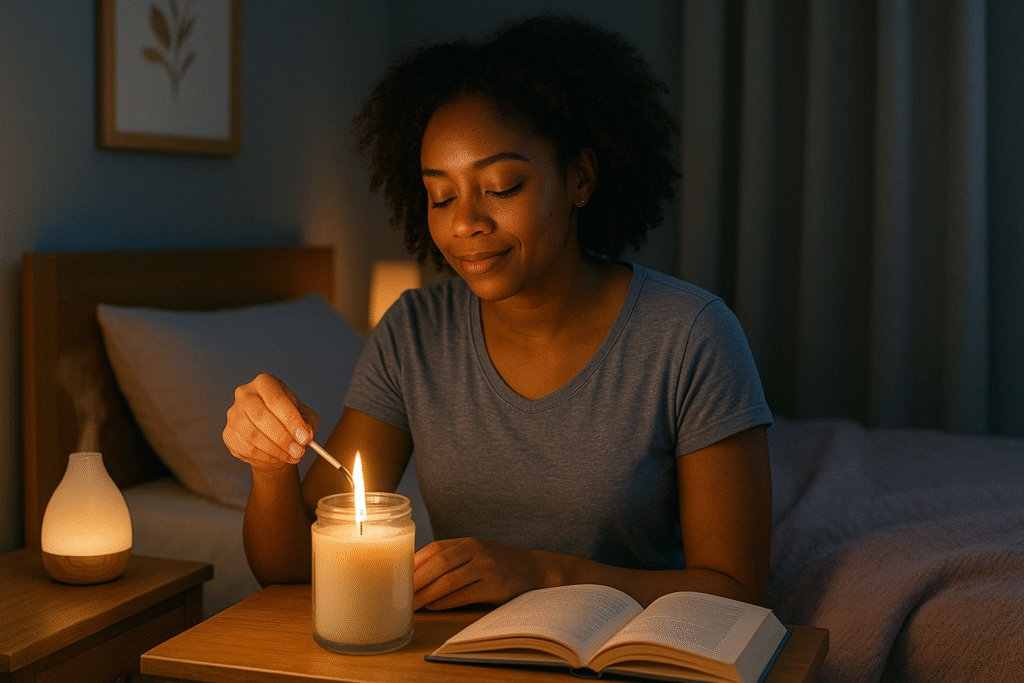A restful night doesn’t begin when your head hits the pillow — it begins with how you wind down before bed. In today’s fast-paced, always-online world, many people jump straight from chaos to the covers and expect sleep to come easily. But without a calm transition, your mind may still be racing long after the lights go out.
Creating a peaceful, intentional nighttime routine is one of the most powerful (and often overlooked) ways to improve your sleep and stop those dreaded nighttime disturbances — including nightmares.
Why Your Brain Needs a Wind-Down Routine
Your brain thrives on rhythm and routine. Just like babies are soothed by bedtime rituals, adults benefit from predictable signals that it’s time to rest. When you follow the same relaxing steps each night, your body begins to associate those actions with sleep, making it easier to drift off and stay asleep.
Without that transition, you may experience:
- Racing thoughts
- Delayed sleep
- Restless tossing and turning
- More vivid or disturbing dreams
7 Steps to a Calming Night Routine
You don’t need an elaborate spa setup — just a few simple, consistent habits that tell your body, “It’s safe to rest now.”
1. Dim the Lights
Reduce bright or overhead lighting 30–60 minutes before bed. This helps your body produce melatonin, the sleep hormone. Try using warm, low light lamps or even candles for a cozy glow.
2. Unplug from Screens
Phones, tablets, and TVs emit blue light that tricks your brain into thinking it’s still daytime. Power down at least 30 minutes before bed — and consider switching to reading, journaling, or listening to soft music.
3. Use Relaxing Scents
Essential oils like lavender, chamomile, and cedarwood have been shown to promote relaxation. Use a diffuser, room spray, or even dab a bit on your pillow.
4. Practice Gentle Stretching or Deep Breathing
Simple stretches or slow breathing calms the nervous system. Try inhaling deeply for 4 counts, holding for 4, and exhaling for 6 — it slows your heart rate and eases anxiety.
5. Set the Mood in Your Bedroom
Make your sleep space feel peaceful:
- Cool temperature (around 65°F/18°C)
- Clean sheets and comfortable pillows
- White noise or calming soundscapes
6. Reflect or Release
Write in a journal, say a prayer, or list 3 things you’re grateful for. This emotional release clears mental clutter and gently shifts your focus to peace, not problems.
7. Stick to the Same Bedtime
Your body loves consistency. Going to bed and waking up at the same time daily — even on weekends — trains your internal clock to fall asleep faster and deeper.
What to Avoid Right Before Bed
- Caffeine or sugary snacks
- Heavy conversations or emotional news
- Checking emails or social media
- Bright lights or loud noises
These all stimulate your brain and make it harder to transition into sleep mode.
A Peaceful Routine Leads to Peaceful Sleep
Creating a calming night routine isn’t just about sleep hygiene — it’s about telling your mind and body that it’s time to let go, unwind, and feel safe. Over time, these habits become powerful signals that invite peace, reduce nightmares, and help you wake up refreshed.
Remember: You can’t force sleep — but you can welcome it with intention.



